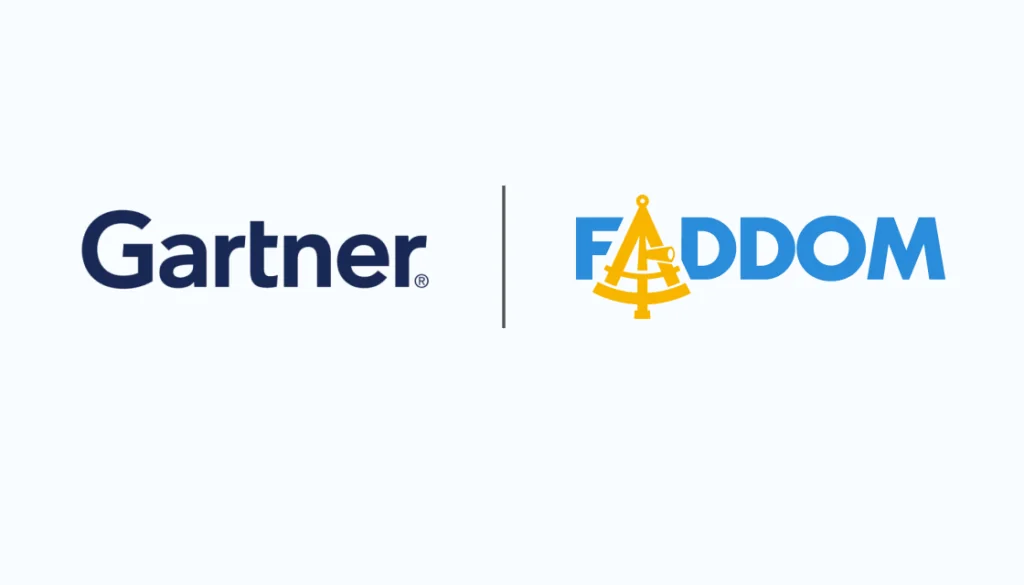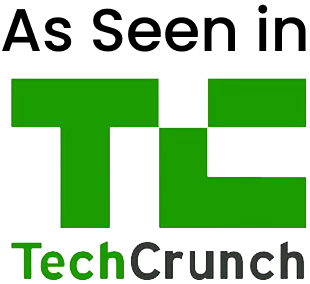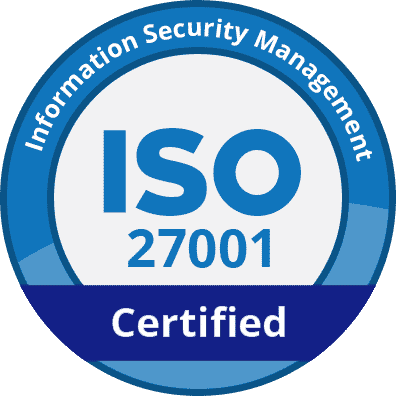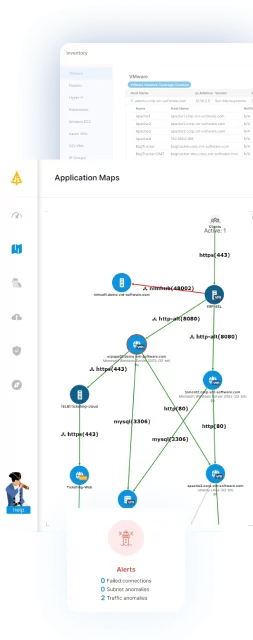What Are IT Change Management Best Practices?
In the ever-evolving field of IT, change is inevitable. However, managing this change is not always straightforward. IT change management best practices help IT teams manage changes in a smooth, efficient, and less disruptive way.
Here are a few examples of processes that fall under IT change management:
- Transitioning to a new CRM system
- Implementing a new ERP system
- Migrating to a new data center, or from on-premises to the cloud
- Rolling out a new security solution
- Changing the company’s email system
- Launching a new website
Traditionally, IT change management has been considered as a mere necessity to keep things running. But today, as most organizations focus on digital transformation, it is becoming a strategic tool to drive innovation, efficiency, and business value. It’s not just about updating systems or fixing bugs, but how to do so in a way that minimizes disruption, maximizes productivity, and contributes to the organization’s overall goals.
Table of Contents
Toggle- What Are IT Change Management Best Practices?
- Develop a Change Management Policy
- Implement a Change Request System
- Deploy Smaller Releases to Reduce Risk
- Tips from the Expert
- Prioritize and Categorize Changes
- Develop and Follow Standardized Procedures
- Consider the Need for a Change Advisory Board (CAB)
- Adapt Changes to Your Organization’s Risk Tolerance
- Foster Communication and Collaboration
- Monitor and Measure Change Performance
- Provide Training and Build Awareness
- Make Application Discovery a Part of Change Management
Develop a Change Management Policy
The change management policy should define the purpose and scope of change management within the organization. It will also set out the roles, responsibilities, and expectations for all stakeholders involved, as well as outline the process for managing changes. The policy must additionally address the process for requesting a change, evaluating it, approving the change, and finally, implementing it.
For instance, a change management policy may set out who is responsible for reviewing and approving requests for changes (RFCs). It should also set out point people or departments for approving the RFC and overseeing the change during development and through the rollout process.
Top Challenges in This Area
Be careful. Simply having a policy isn’t enough: If the policy is ignored or not followed, it can lead to problems down the road, like missed deadlines, budget overruns, and service disruptions. Unclear roles can also cause confusion and decision-making delays.
Tips for Success in This Area
- Ensure buy-in by involving key stakeholders in policy development.
- Adapt to evolving needs by regularly reviewing and updating the change policy.
- Aid stakeholders by making sure the change management policy is easy to understand and follow.
- Ensure compliance by communicating the policy to all stakeholders and providing training on how to use it.
Implement a Change Request System
With a centralized system for submitting and tracking change requests, organizations can follow through on all RFCs, from the initial request to the final implementation. Businesses can take advantage of dedicated IT change management platforms, such as TOPdesk and WalkMe, or a more general IT management (ITSM/ITIL) platform such as ManageEngine ServiceDesk Plus and ServiceNow.
Either way, embracing a platform that facilitates IT change helps ensure transparency by providing real-time updates on change statuses. It can also automate workflows for faster processing and fewer human errors. However, when choosing an IT change management platform, it’s important to find one that’s easy to use and navigate so that users and admins can easily track the status of changes, identify risks, and generate reports.
Top Challenges in This Area
Too much reliance on manual processes (or trying to adapt a platform not suited to IT change management) can lead to lost change requests and tracking difficulties. In addition, inadequate visibility into change progress can cause frustration.
Tips for Success in This Area
- Achieve maximum buy-in by selecting a user-friendly tool that aligns with the organization’s needs.
- Ensure seamless updates by choosing a system that integrates with existing communication channels (and a range of channels).
Deploy Smaller Releases to Reduce Risk
Adopting a strategy of deploying smaller, incremental releases, rather than large-scale rollouts, can significantly enhance the success rate of changes. This approach minimizes the scope and impact of potential incidents, making it easier to isolate and rectify issues. Progressive deployments, such as canary releases or feature flags, allow changes to be tested with a subset of users to validate stability before broader implementation.
Top Challenges in This Area
The legacy approach of bundling numerous changes into a single release can lead to complex incidents and make troubleshooting more difficult. The shift to smaller releases requires a cultural change and may need new tools or changes in current workflows, which can be a challenge to implement.
Tips for Success in This Area
- Coordinate smaller releases using a centralized change schedule to avoid conflicts and identify blackout periods. This practice helps teams execute releases more smoothly and allows for better management of the deployment timeline.
- Utilize change management features within platforms like Jira Service Management to maintain a clear schedule and facilitate these smaller, controlled releases.
- Regularly monitor and review the performance of these deployments to refine and improve processes continuously.

Lanir specializes in founding new tech companies for Enterprise Software: Assemble and nurture a great team, Early stage funding to growth late stage, One design partner to hundreds of enterprise customers, MVP to Enterprise grade product, Low level kernel engineering to AI/ML and BigData, One advisory board to a long list of shareholders and board members of the worlds largest VCs
Tips from the Expert
In my experience, here are tips that can help you better implement IT change management:
-
Develop a clear change management policy
Involve key stakeholders in policy creation to ensure buy-in, and regularly review the policy to adapt to evolving business needs.
-
Use a centralized change request system
Implement a user-friendly system to track and manage all changes, reducing the risk of lost requests and ensuring transparency. - Deploy smaller, incremental releases
Roll out smaller changes to minimize risk and allow easier troubleshooting, using tools like canary releases or feature flags. - Prioritize changes using application dependency mapping
Map your IT environment to fully understand the complexity and impact of changes, enabling better prioritization and resource allocation.
-
Establish and follow standardized procedures
Ensure clear, documented procedures are accessible to all teams and regularly updated, with training to drive adherence.
Prioritize and Categorize Changes
Prioritization should be based on the urgency, impact, cost, and risk of the change. Incorrect change prioritization or categorization can cause problems, including missed deadlines, budget overruns, and service disruptions.
Setting priorities can be difficult without a clear picture of your network, assets, and resources. And yet, many organizations take on even major changes without these insights. Application dependency mapping (ADM) can provide vital data when it comes to setting priorities, such as how complex a given change will be.
Prioritization isn’t just “once and done.” Priorities must be regularly reassessed to accommodate shifting business needs.
Top Challenges in This Area
Failure to prioritize can cause challenges when it comes to allocating time and resources. While minor changes may be given a lower priority, neglecting these types of changes can affect user experience and overall efficiency, so they should not sit on the back burner permanently.
Tips for Success in This Area
-
- Ensure consistent prioritization by using a standardized classification framework, such as a risk assessment matrix, factoring in the impact, cost, and risk of the change.
-
- Maintain productivity and morale by balancing quick wins with strategic changes.
Develop and Follow Standardized Procedures
To ensure buy-in from every team involved, organizations must establish clear processes and procedures for change assessment, testing, and deployment; they must then document and communicate these procedures to all relevant stakeholders.
Of course, creating standardized procedures isn’t always enough. When teams don’t follow established policies, it can lead to errors and inconsistencies.
It can also go a long way to ensure standardized procedures are easy to understand and follow, as well as to communicate them clearly and provide training on how to use them.
Top Challenges in This Area
Lack of standardized procedures (or lack of buy-in) will lead to inconsistent outcomes; the entire organization needs to be behind the change to ensure it succeeds. Skipping testing steps can result in system failures and downtime; these should be a part of all standardized procedures where necessary.
Tips for Success in This Area
-
- Give all teams easy access to procedures and best practices by creating a shared knowledge base and keeping it up to date.
-
- Encourage continuous improvement of procedures by accepting open, honest feedback.
Consider the Need for a Change Advisory Board (CAB)
Many organizations establish a cross-functional change advisory board (CAB) that includes representatives from various stakeholder teams (e.g., development, ops, security, executive, etc.).
The CAB is responsible for reviewing and approving change requests (RFCs) before they are implemented to ensure they align with business goals. These are “big picture” folks who will make informed decisions on approving, rejecting, or deferring changes. They also have an eye on the business’s longer-term strategy and budget considerations.
However, a CAB is less suited to a modern IT environment where changes are made on a daily basis. Therefore, organizations should consider how to adapt this model to avoid slowing down digital transformation.
Top Challenges in This Area
CABs (and especially CAB meetings) can be slow and bureaucratic, delaying changes and making it hard to respond to urgent needs and potentially leading to resentment. A lack of diverse representation can also result in biased decisions; for instance, if developers are not included, they will resent any decisions that will impinge upon their workflow and create inefficiencies for their day-to-day operations.
Tips for Success in This Area
-
- Consider a more flexible or lightweight version of CAB to avoid slowing down development velocity and innovation.
-
- Make meetings more efficient and tolerable by defining clear CAB meeting agendas and time limits.
-
- Minimize negative impacts by ensuring that all areas are included, including IT, business, and operations.
-
- Bring in fresh perspectives by periodically rotating CAB members.
Adapt Changes to Your Organization’s Risk Tolerance
Understanding your organization’s risk tolerance is crucial in balancing speed and risk in change management. This understanding must take into account the company’s culture, risk appetite, and regulatory and compliance obligations. A detailed plan that aligns with these factors will dictate the rigor of change management processes, from approvals to duty segregation.
Top Challenges in This Area
Compliance with regulations like SOX and GDPR imposes non-negotiable rules that can complicate and slow down the change management process. It’s also challenging to find the right balance between being overly cautious and taking necessary risks for innovation and speed.
Tips for Success in This Area
-
- Customize and automate approvals and workflows to match organizational risk profiles.
-
- Regularly reassess and adjust the change management practices to fine-tune the balance between risk and agility.
-
- Engage in data-driven risk assessment to classify and manage changes appropriately, allowing for automation of low-risk processes while ensuring manual approval for critical ones.
Foster Communication and Collaboration
One of the key factors that can lead to resistance to change and problems during implementation is a perceived lack of communication and collaboration. So it’s very important to inform teams about upcoming changes very early on in the process.
Create and maintain open channels of communication across all teams involved, making it clear that you’re counting on all stakeholders to be proactive and to speak up about concerns. This lets them know that they will be heard. Include a variety of communication channels to reach all affected stakeholders and keep them in the loop regarding planned changes, potential risks, and benefits. (Communicating benefits is essential to maintain positivity through more difficult change projects.)
Top Challenges in This Area
Poor communication can leave teams in the dark about why the change is being made and what their role is in rolling it out, and this can result in resistance. Siloed teams can be a red flag pointing to the presence of poor communication, as well as a lack of effective collaboration and problem-solving.
Tips for Success in This Area
-
- Implement regular status updates and progress reports for ongoing changes.
-
- Keep everybody in the loop: When things don’t go according to plan, communicate modifications to the plan early and often (as early as possible, obviously).
Monitor and Measure Change Performance
Change performance is often not monitored or measured, which inevitably leads to problems that could have been avoided. Most organizations have probably already incorporated data-driven insights and analysis in other areas; here, too, these will help refine and improve change management processes.
You’ll want to define important key performance indicators (KPIs) to help assess change success as well as improvements over time, such as:
-
- Downtime and disruption (obviously lower is better)
-
- Change migration time
-
- Change acceptance rate
-
- Schedule variance
-
- On-time change completion
-
- Number of failed, backed out, or canceled changes
Once a set of meaningful KPIs has been established, these can be continuously tracked and analyzed to highlight the most challenging areas to target for improvement. Organizations can also monitor the progress of any particular change and measure its performance against their initial goals. This will also help identify and address problems early on.
Top Challenges in This Area
The absence of performance tracking, or when it’s done using values that are not meaningful, can result in unaddressed issues. Many businesses also find that if they’re unable to measure impact, it hinders efforts at process optimization.
Tips for Success in This Area
-
- Make KPI monitoring simple with dashboards and visualizations.
-
- Celebrate successful changes, and share lessons learned from setbacks.
Provide Training and Build Awareness
What may seem like resistance on the part of team members may in fact stem from a lack of training and awareness. Resisting change is part of human nature, especially if you can’t see or understand the benefits. To help circumvent this resistance and ensure the highest degree of compliance with the established change process, organizations can provide comprehensive training on change management processes, relevant to each stakeholder’s roles and responsibilities.
It also helps to provide training on change management principles and procedures to all stakeholders. When you educate employees about the importance of change management and their roles, and help them feel like a valued part of the change management team, it helps foster a culture of adaptability, minimize resistance, and help employees embrace the benefits of change.
Top Challenges in This Area
Employees can’t handle change properly if they’re not provided with adequate training; resistance often stems from a lack of understanding and awareness.
Tips for Success in This Area
-
- Accommodate diverse learning styles by offering a mix of training formats (e.g., workshops, online courses) that are directly applicable to each individual’s role.
-
- Get off on the right foot with new hires by incorporating change management principles into new employee onboarding.
Make Application Discovery a Part of Change Management
And here’s one final, crucial best practice: In a world where every IT change project, big or small, has the potential to interrupt a business, it’s essential to understand the current environment before implementing any changes.
Enter Faddom is an application dependency mapping platform that comprehensively assesses all IT infrastructure. In change management, this step will help identify all relevant assets and then develop a plan to mitigate any risks associated with the change project.
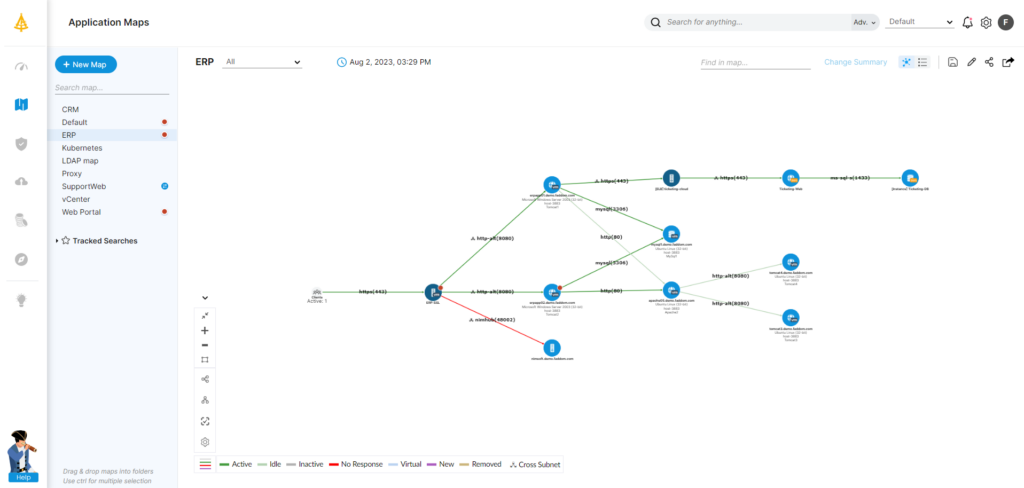
Most of the best practices described here will be easier to implement using Faddom to:
-
- Map your IT environment and identify all dependencies between any systems and applications that the change will impact.
-
- Pinpoint potential risks from the change, letting you plan for a smoother rollout.
-
- Identify potential stakeholders to ensure successful collaboration every step of the way.
With Faddom, nothing falls through the cracks. It quickly and effortlessly—no agents, credentials, or firewall changes required—maps your legacy and modern architecture from physical to virtual to cloud instances to ensure that nothing gets left behind or forgotten.
Faddom will help simplify even the most complex IT change management projects, such as application change detection, impact analysis, or root cause analysis
To learn more about Faddom, just book a demo with our expert team!

